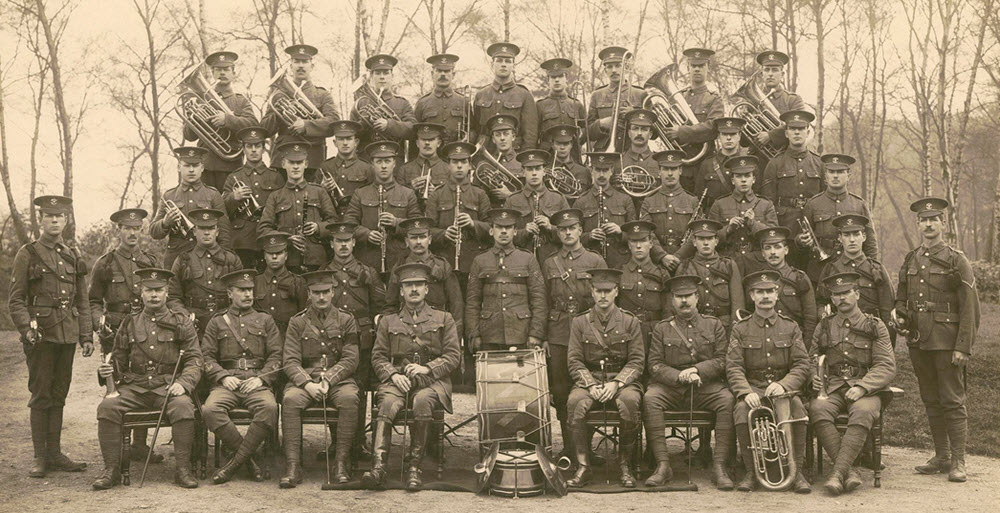Ypres and the Menin Gate: A Commemoration of Sacrifice
The Menin Gate Memorial in Ypres, Belgium, stands as a significant symbol of remembrance for the sacrifices made by the British and Commonwealth soldiers during World War I. This iconic monument honors the missing soldiers of the Ypres Salient, an area that witnessed some of the fiercest battles of the Great War.
Historical Significance of Ypres
Ypres, a small town in Belgium, became a focal point during World War I. The region witnessed numerous battles, including the First, Second, and Third Battles of Ypres. The Third Battle is more commonly referred to as the Battle of Passchendaele. These battles were characterized by extensive loss of life and unyielding trench warfare, leading to significant casualties on both sides. The landscape was transformed into a quagmire by relentless artillery bombardments, rain, and the widespread use of chemical weapons.
Construction of the Menin Gate
The Menin Gate was inaugurated on July 24, 1927, a project led by the Imperial War Graves Commission, now known as the Commonwealth War Graves Commission. Designed by Sir Reginald Blomfield, the memorial is constructed from limestone and features a large triumphal arch. Inscribed on a series of panels are the names of over 54,000 soldiers who died in the battles around the Ypres Salient and have no known graves. This architectural design not only reflects the somber purpose of the memorial but also serves as a timeless tribute to those who made the ultimate sacrifice.
The Role of the Memorial
The Menin Gate serves as a poignant reminder of the collective sacrifices made by the soldiers. The inscribed names symbolize the vast number of unidentified soldiers whose lives were lost in the conflict. Despite their anonymity, these soldiers are honored and remembered for their service and sacrifice. The memorial thus bridges the gap between the past and present, ensuring that the stories of these individuals transcend generations and are never forgotten.
The Last Post Ceremony
A unique tradition associated with the Menin Gate is the Last Post Ceremony, conducted every evening at 8 PM. This ceremony involves buglers from the local fire brigade playing the “Last Post” as a tribute to the fallen soldiers. Since its inception in 1928, this daily ceremony was halted only during World War II, when Ypres was under German occupation. The ceremony resumed on September 6, 1944, shortly after the liberation of the town. This uninterrupted tradition since World War II stands as a testament to the enduring commitment to honor those who perished.
The Ypres Salient: A Historical Overview
The Ypres Salient was one of the most intensely contested regions during World War I. Located in Western Flanders, it was surrounded on three sides by German forces. This geographical position made it strategically significant, and as a result, it became the site of repeated and protracted battles. The salient witnessed the introduction of new warfare techniques and technologies, including the first large-scale use of poison gas by the Germans in 1915. The introduction of such weapons marked an evolution in military tactics and underscored the increasing brutality of the conflict.
Commemoration and Memory
The Menin Gate serves as more than a monument; it is a space where people from diverse backgrounds gather to remember and reflect. The names etched into its stone panels are a testament to the many lives given in the hope of a better future. The continual recitation of the Last Post acts as an enduring pledge to maintain peace and remember those who were lost. It is a place where history is tangibly present and where the past’s echoes continue to resonate.
Cultural and Educational Impact
Educational programs and guided tours of the Menin Gate and surrounding areas have been instituted to offer visitors a deeper understanding of the First World War’s complexities. These initiatives aim to educate younger generations, ensuring that the sacrifices made are not abstract concepts but are understood in their full historical context. Furthermore, the gate plays a vital role in cultural memory, symbolizing a collective act of remembrance embraced by individuals worldwide.
Preserving the Legacy
The Commonwealth War Graves Commission undertakes the crucial role of maintaining the Menin Gate. Constant efforts are made to preserve the memorial in pristine condition, ensuring its longevity for future generations. Such endeavors reflect a broader commitment to commemorating and remembering those who served in World War I. This preservation effort underscores the importance of safeguarding cultural heritage sites associated with global conflicts.
The Global Symbolism of the Menin Gate
Beyond its immediate context, the Menin Gate represents a global symbol of the costs of war. As visitors from various nations gather, they partake in a collective reflection on the impacts of conflict. The gate’s importance transcends national boundaries, making it a place of universal reflection and understanding. Its enduring presence teaches and reminds all humanity of the necessity of peace and the mutual respect for those who are lost to war.
For more detailed information about the Menin Gate and its ceremonies, you can visit the official site.
In conclusion, the Menin Gate in Ypres serves not only as a memorial to those soldiers who went missing during the war but also as a powerful reminder of the price of conflict. Through ceremonies and commemorations, their memories continue to be honored by visitors from around the world. The Menin Gate stands not merely as a monument to loss but as a beacon for peace, learning, and historical remembrance. As we remember past conflicts, such memorials encourage us to work towards a future where such sacrifices need never be repeated.



